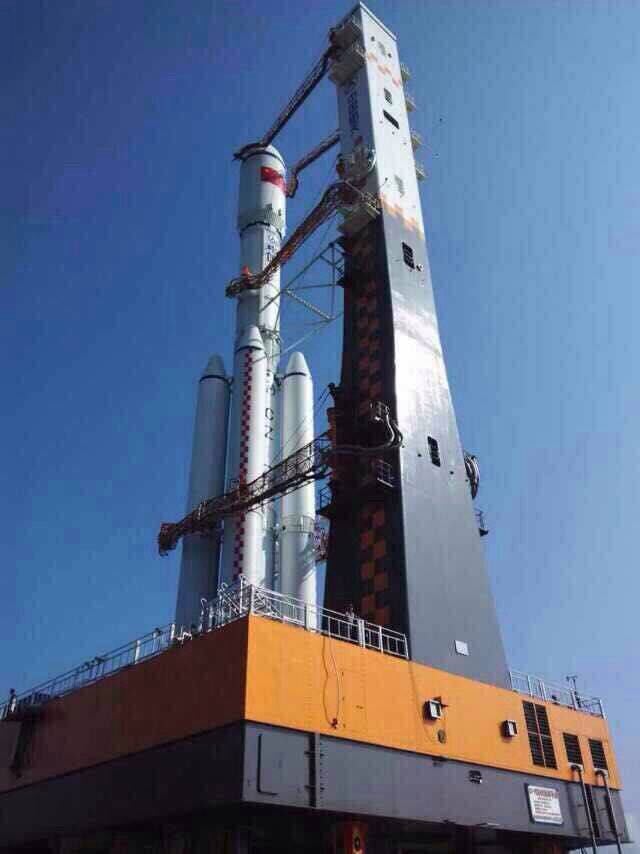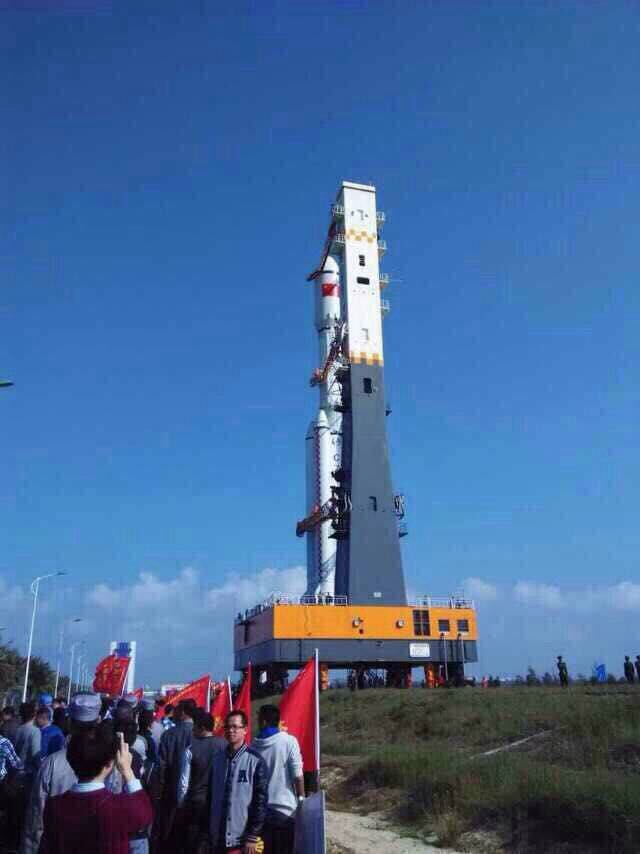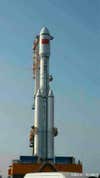Next Generation of Chinese Space Vehicles Begins Its Long March (By Standing Up)
On the tropical island Hainan, Wenchang Satellite Launch Center got its very first heavy rocket. The Long March 7 (LM-7),...

On the tropical island Hainan, Wenchang Satellite Launch Center got its very first heavy rocket. The Long March 7 (LM-7), built by the China Aerospace Science and Technology Corporation (CASTC), will likely not launch until 2016, but Chinese engineers have assembled it on the launch pad’s mobile service structure in order to test its systems for preflight and integration quality assurance.

LM-7
The LM-7 is a mid-heavy weight, 600 ton launch rocket, similar to the SpaceX Falcon 9 rocket. It is likely to replace the man-rated Long March 2 rocket, which is currently used to launch China’s manned Shenzhou space missions. However, the LM-7 is estimated to carry 13.5 tons (depending on booster rocket configuration) of cargo in low earth orbit, which is a 50% increase over the LM-2. Its 3.35 meter core diameter would allow it to carry most commercial payloads, as well as larger scientific payloads into sun synchronous orbits to observe space weather activity like solar flares.

Complete LM-7
The LM-7, along with the lighter Long March 6 and heavier Long March 5, will act as China’s next generation of space launch vehicles. Chinese advances in space launch technology will see not only an increased military presence in orbit, but also scientific cooperation and even lunar exploration.
You may also be interested in:
Chinese Laser Zaps Space, For World Peace
China is Building One of the World’s Largest Space Launch Vehicles
New, Better Chinese Spy Satellite Hits Orbit
Offset This! China’s Hypersonic Glider Flies for the Third Time This Year